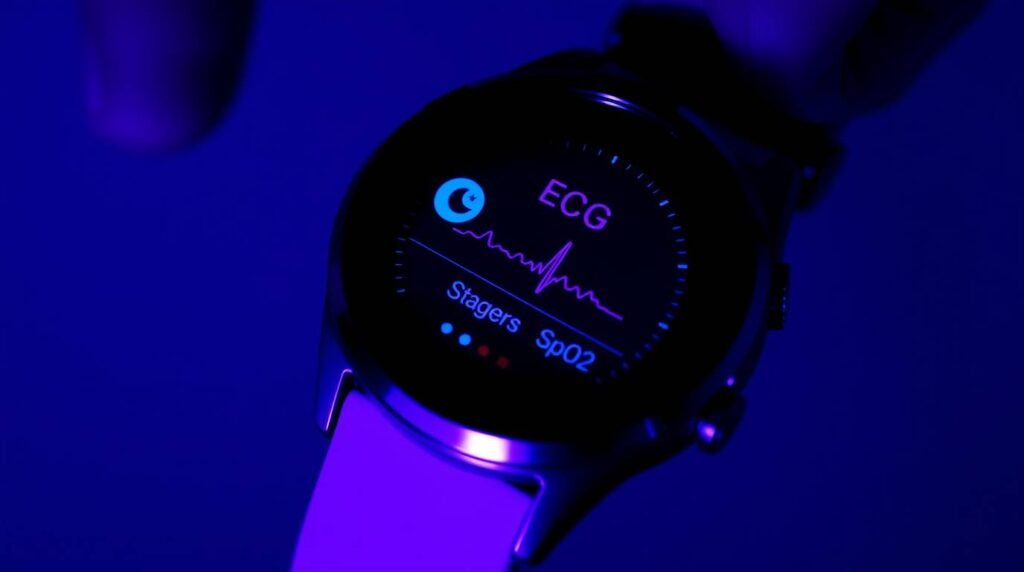Evolution of Wearable Health Tech Explained | TrendydailyNews

Remember when wearable tech mostly meant counting your steps and estimating calories burned? Those days are fading fast. Today’s generation of smartwatches, rings, patches, and other wearable health devices are evolving into sophisticated personal health monitoring systems, packed with sensors that track far more than just your daily jog. This transformation is putting unprecedented amounts of health data directly into users’ hands, promising personalized insights but also raising important questions.
From detecting heart irregularities to analyzing sleep quality in minute detail, wearable tech is moving firmly into the realm of preventative health and wellness management. At Trendydailynews.com, we track the innovations changing how we live, and the advancements in personal health wearables represent a major shift in our relationship with our own bodies and data.
Beyond the Basics: What Can Wearables Track Now?
The capabilities of modern wearables have expanded dramatically:
- Advanced Heart Health Monitoring: Beyond simple heart rate, many devices now offer ECG (electrocardiogram) capabilities to detect atrial fibrillation (AFib), monitor heart rate variability (HRV) for stress insights, and track blood oxygen saturation (SpO2).
- Detailed Sleep Analysis: Trackers now provide breakdowns of sleep stages (light, deep, REM), monitor breathing disturbances, and offer actionable insights for improving sleep quality.
- Stress & Recovery Monitoring: Using metrics like HRV, skin temperature, and electrodermal activity (EDA), wearables can estimate stress levels and advise on recovery needs.
- Temperature Sensing: Continuous skin temperature tracking can provide insights into potential illness, fever, or even menstrual cycle tracking for women.
- Continuous Glucose Monitoring (CGM): While still more common as dedicated medical devices, integration with consumer wearables is growing, offering real-time blood sugar insights, particularly valuable for diabetics but increasingly used by wellness enthusiasts.
- Fall Detection: Crucial for older adults or those with mobility issues, some wearables can automatically detect a hard fall and alert emergency contacts.
The Promise: Personalized Insights & Proactive Health
The allure of this technology lies in its potential benefits:
- Early Warning Signs: Wearables can potentially detect subtle changes or irregularities (like AFib) before symptoms become obvious, prompting earlier medical consultation.
- Personalized Wellness: Understanding how sleep, stress, activity, and other factors uniquely affect your body can empower users to make tailored lifestyle adjustments.
- Motivation & Engagement: Tracking progress and receiving data-driven feedback can significantly boost motivation for healthier habits.
- Data for Doctors: While not always a replacement for clinical diagnostics, user-generated health data can sometimes provide valuable context for healthcare professionals (though interpretation requires caution). ([Link to potential TND article on Digital Health Trends])
The Challenges: Data Overload, Accuracy, and Privacy
Despite the potential, significant challenges remain:
- Accuracy & Reliability: Consumer-grade sensors are not always as accurate as medical-grade equipment. False positives or negatives can occur, potentially causing unnecessary anxiety or complacency.
- Data Interpretation: Receiving streams of raw data (like HRV or sleep stages) without proper context or understanding can be confusing or lead to misinterpretation (“data anxiety”).
- Privacy & Security: These devices collect highly sensitive personal health information. Concerns about data breaches, how companies use this data, and potential sharing with third parties are paramount. ([Link to potential TND article on Data Privacy Issues])
- Over-Reliance: There’s a risk of becoming overly reliant on technology for health cues, potentially ignoring intuitive body signals.
The Future is On Your Wrist (and Finger, and Chest…)
The trajectory is clear: wearable health tech will become even more integrated and sophisticated. We can expect:
- More Non-Invasive Sensors: Advancements in monitoring hydration, blood pressure, and potentially even stress hormones without needles.
- AI-Powered Insights: Artificial intelligence will play a greater role in analyzing complex data streams to provide more personalized and predictive health recommendations.
- Greater Healthcare Integration: Closer links between consumer wearables and clinical systems, allowing for more seamless (but carefully managed) data sharing with doctors. ([Link to TND Technology or Health category page])
Wearable health technology offers a powerful window into our well-being, moving far beyond simple fitness tracking. As these devices become more capable, understanding their potential, limitations, and the critical importance of data privacy will be essential for harnessing their benefits responsibly.
FAQ Section
Q1: Can my smartwatch diagnose a medical condition?
A1: Generally, no. Consumer wearables can detect potential irregularities (like signs suggestive of AFib) and alert you to consult a doctor, but they are not typically considered diagnostic tools themselves. A formal diagnosis requires clinical evaluation and testing by a healthcare professional.
Q2: How accurate is the data from wearable health trackers?
A2: Accuracy varies significantly by device, sensor type, and the metric being measured. Step counts and basic heart rate are often quite accurate. More complex metrics like sleep stages, SpO2, or stress levels can be less precise than clinical methods but can still provide useful trend insights. Always check independent reviews and research for specific device accuracy.
Q3: Is my health data safe with these wearable companies?
A3: Reputable companies have security measures in place, but no system is impenetrable. It’s crucial to review the company’s privacy policy to understand how your data is collected, stored, used, and potentially shared. Be mindful of the permissions you grant within the device’s app.
Q4: Is it worth getting a wearable with lots of advanced health features?
A4: It depends on your goals and interests. If you have specific health concerns (like heart health or sleep issues) or are highly motivated by data, advanced features might be valuable. If you primarily want fitness tracking and notifications, a simpler device might suffice. Consider whether you’ll actively use and understand the more complex data provided.





На данном ресурсе представлена интересная и ценная данные по разнообразным темам.
Гости могут найти решения на популярные темы.
Статьи размещаются регулярно, чтобы вы каждый могли читать новую подборку.
Удобная организация сайта облегчает быстро выбрать нужные разделы.
анальное порно
Широкий спектр категорий делает ресурс универсальным для всех посетителей.
Каждый посетитель сможет выбрать советы, которые нужны именно вам.
Присутствие понятных подсказок делает сайт особенно значимым.
Таким образом, данный сайт — это интересный проводник важной информации для каждого пользователей.
Can you be more specific about the content of your article? After reading it, I still have some doubts. Hope you can help me. https://accounts.binance.com/register-person?ref=IHJUI7TF